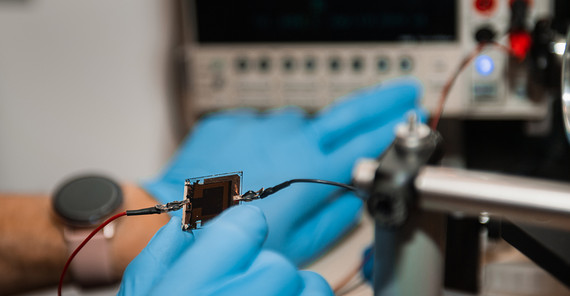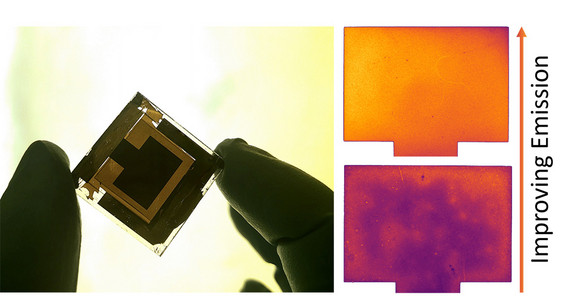All-perovskite tandem solar cells are of great interest because of their low preparation cost and their promise to break the theoretical efficiency limit of single-junction solar cells. Still, key scientific and technical problems need to be solved, especially with regard to device stability and upscaling. The development of novel preparation methods and charge transport materials to improve the homogeneity of the perovskite absorber and the interface quality is hence of great significance to boost the performance and to upscale the technology.
University of Potsdam physicist Dr. Felix Lang, head of the ROSI group and co-first author on the paper, as well as members of the PotsdamPero group led by Dr. Martin Stolterfoht contributed to the study, where a novel self-assembled monolayer (SAM) was developed. SAM acts as a hole transport material in perovskite solar cells, where the perovskite layer is usually sandwiched between a hole transport layer and an electron transport layer. It possesses an unique spatially distorted structure that facilitates the growth of large-area perovskite films. At the same time, the new material enhances the interfacial charge extraction and transport capability. ”This can be visualized (see figure) by recording the electroluminescence, i.e. by operating the solar cell as an LED” explains Felix Lang. The new monolayer material ultimately enabled all-perovskite tandem cells with a certified stabilized world record efficiency of 26.4%.
Link to Publication: He, R., Wang, W., Yi, Z., Lang F. et al. & Zhao, D. All-perovskite tandem 1 cm2 cells with improved interface quality. Nature (2023). https://doi.org/10.1038/s41586-023-05992-y


